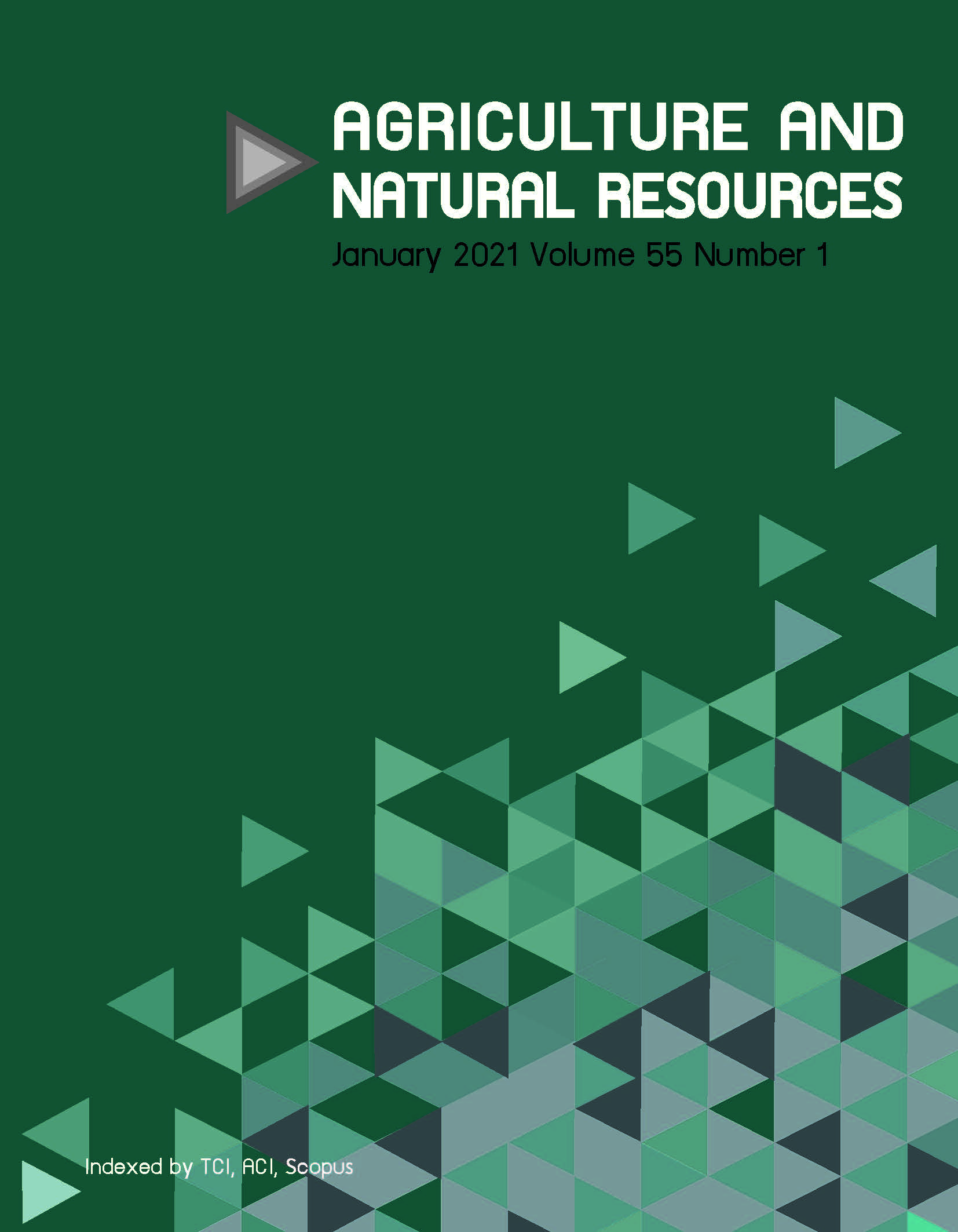Effect of microwave drying on drying characteristics, volatile compounds and color of holy basil (Ocimum tenuiflorum L.)
Keywords:
Basil, Color, Drying characteristics, Microwave, Volatile compoundsAbstract
Microwave is expected to be a novel method for drying of holy basil leaves. This study evaluated its drying efficiency and effects on aroma characteristics of the basil. Microwave drying was conducted on holy basil leaves, with the drying characteristics, volatile compounds and color properties compared to those of freeze drying. A constant rate in the drying period was used for microwave drying. In both drying methods, the Page model provided a good fit to the changes in the moisture content (coefficient of determination = 0.996–0.998). The kinetic value increase with microwave power indicated a quadratic function. The major volatile flavor compounds detected using gas chromatography-mass spectrometry were α-humulene, α-selinene, methyl eugenol and eugenol. These compounds were enhanced during the drying process but then declined during storage for 4 wk. Microwave-dried basil had the largest decline (e.g., the peak area of α-humulene declined from 15.2±2.6×107 to 1.7±0.1×107). The color change of freeze-dried basil leaves was very noticeable while that of microwave-dried leaves was subtle. Overall, it was shown that microwave drying could be used commercially in the preparation of basil leaves, as the technique was inexpensive, easily applied and capable of maintaining leaf color better than freeze drying.
Downloads
Published
How to Cite
Issue
Section
License

This work is licensed under a Creative Commons Attribution-NonCommercial-NoDerivatives 4.0 International License.
online 2452-316X print 2468-1458/Copyright © 2022. This is an open access article under the CC BY-NC-ND license (http://creativecommons.org/licenses/by-nc-nd/4.0/),
production and hosting by Kasetsart University of Research and Development Institute on behalf of Kasetsart University.







